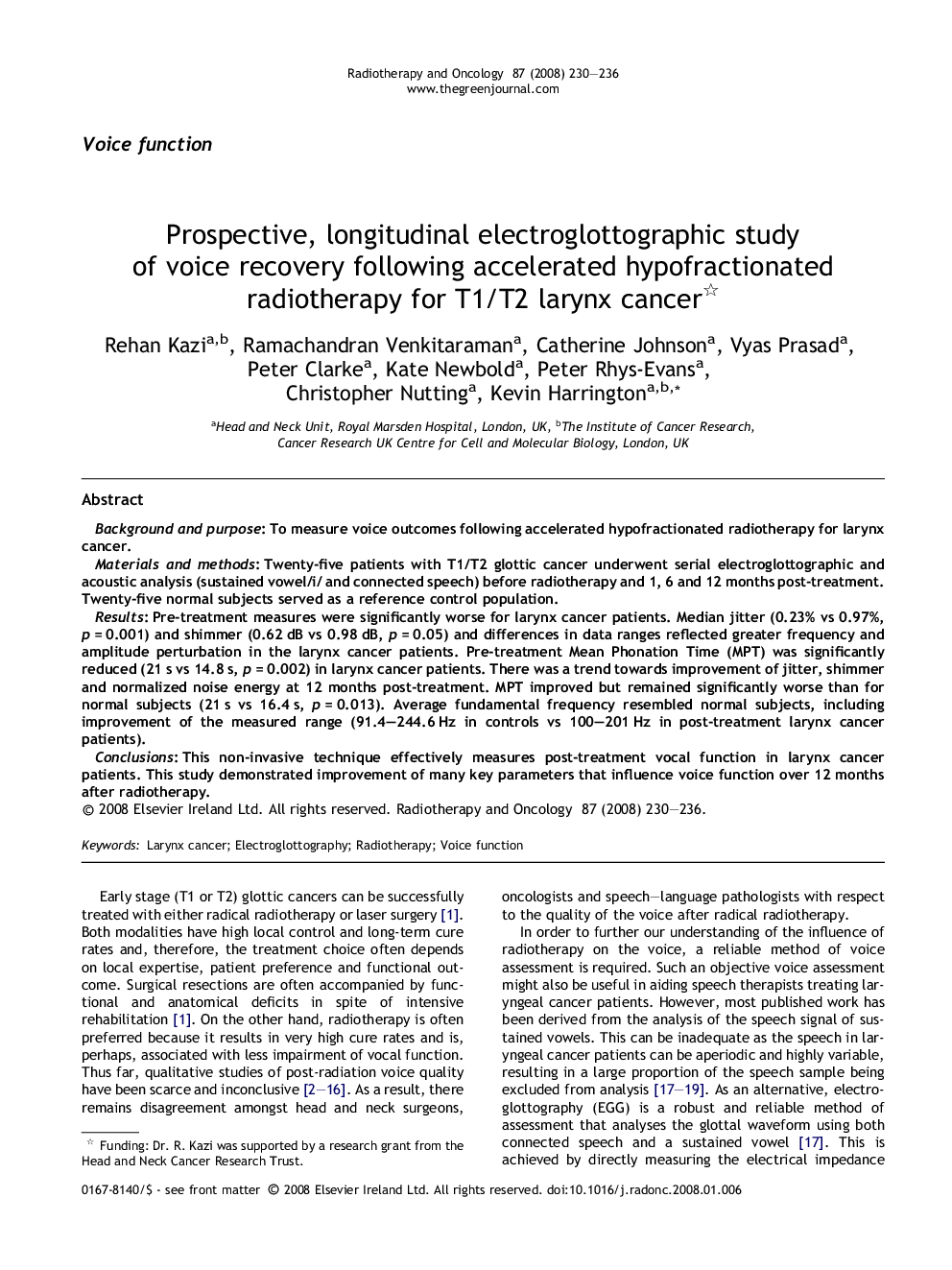| Article ID | Journal | Published Year | Pages | File Type |
|---|---|---|---|---|
| 2160577 | Radiotherapy and Oncology | 2008 | 7 Pages |
Background and purposeTo measure voice outcomes following accelerated hypofractionated radiotherapy for larynx cancer.Materials and methodsTwenty-five patients with T1/T2 glottic cancer underwent serial electroglottographic and acoustic analysis (sustained vowel/i/ and connected speech) before radiotherapy and 1, 6 and 12 months post-treatment. Twenty-five normal subjects served as a reference control population.ResultsPre-treatment measures were significantly worse for larynx cancer patients. Median jitter (0.23% vs 0.97%, p = 0.001) and shimmer (0.62 dB vs 0.98 dB, p = 0.05) and differences in data ranges reflected greater frequency and amplitude perturbation in the larynx cancer patients. Pre-treatment Mean Phonation Time (MPT) was significantly reduced (21 s vs 14.8 s, p = 0.002) in larynx cancer patients. There was a trend towards improvement of jitter, shimmer and normalized noise energy at 12 months post-treatment. MPT improved but remained significantly worse than for normal subjects (21 s vs 16.4 s, p = 0.013). Average fundamental frequency resembled normal subjects, including improvement of the measured range (91.4–244.6 Hz in controls vs 100–201 Hz in post-treatment larynx cancer patients).ConclusionsThis non-invasive technique effectively measures post-treatment vocal function in larynx cancer patients. This study demonstrated improvement of many key parameters that influence voice function over 12 months after radiotherapy.
